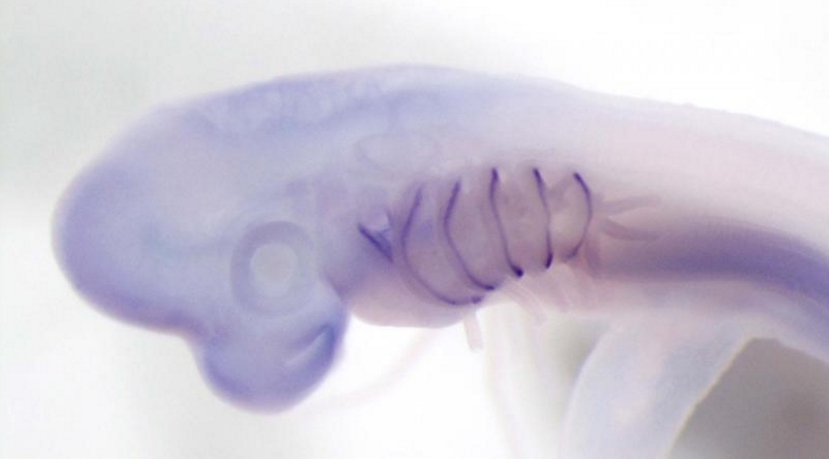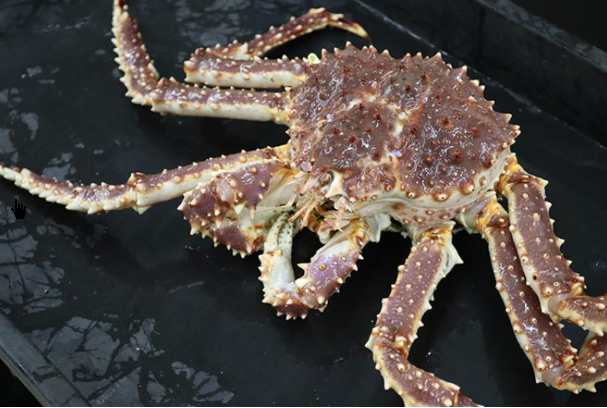
Latest analysis shows that human limbs share a genetic programme with the gills of cartilaginous fishes such as sharks and skates, providing evidence to support a century-old theory on the origin of limbs that had been widely discounted.
An idea first proposed 138 years ago that limbs evolved from gills, which has been widely discredited due to lack of supporting fossil evidence, may prove correct after all – and the clue is in a gene named for everyone’s favourite blue hedgehog.
Unlike other fishes, cartilaginous fishes such as sharks, skates and rays have a series of skin flaps that protect their gills. These flaps are supported by arches of cartilage, with finger-like appendages called branchial rays attached.
In 1878, influential German anatomist Karl Gegenbaur presented the theory that paired fins and eventually limbs evolved from a structure resembling the gill arch of cartilaginous fishes. However, nothing in the fossil record has ever been discovered to support this.
Now, researchers have reinvestigated Gegenbaur’s ideas using the latest genetic techniques on embryos of the little skate – a fish from the very group that first inspired the controversial theory over a century ago – and found striking similarities between the genetic mechanism used in the development of its gill arches and those in human limbs.
Scientists say it comes down to a critical gene in limb development called ‘Sonic hedgehog’, named for the videogame character by a research team at Harvard Medical School. [xyz-ihs snippet=”adsense-body-ad”]
The new research shows that the functions of the Sonic hedgehog gene in human limb development, dictating the identity of each finger and maintaining growth of the limb skeleton, are mirrored in the development of the branchial rays in skate embryos. The findings are published today in the journal Development.
Dr Andrew Gillis, from the University of Cambridge’s Department of Zoology and the Marine Biological Laboratory, who led the research, says that it shows aspects of Gegenbaur’s theory may in fact be correct, and provides greater understanding of the origin of jawed vertebrates – the group of animals that includes humans.
“Gegenbaur looked at the way that these branchial rays connect to the gill arches and noticed that it looks very similar to the way that the fin and limb skeleton articulates with the shoulder,” says Gillis. “The branchial rays extend like a series of fingers down the side of a shark gill arch.”
“The fact that the Sonic hedgehog gene performs the same two functions in the development of gill arches and branchial rays in skate embryos as it does in the development of limbs in mammal embryos may help explain how Gegenbaur arrived at his controversial theory on the origin of fins and limbs.”
In mammal embryos, the Sonic hedgehog gene sets up the axis of the limb in the early stages of development. “In a hand, for instance, Sonic hedgehog tells the limb which side will be the thumb and which side will be the pinky finger,” explains Gillis. In the later stages of development, Sonic hedgehog maintains outgrowth so that the limb grows to its full size.
To test whether the gene functions in the same way in skate embryos, Gillis and his colleagues inhibited Sonic hedgehog at different points during their development.
They found that if Sonic hedgehog was interrupted early in development, the branchial rays formed on the wrong side of the gill arch. If Sonic hedgehog was interrupted later in development, then fewer branchial rays formed but the ones that did grow, grew on the correct side of the gill arch – showing that the gene works in a remarkably similar way here as in the development of limbs.
“Taken to the extreme, these experiments could be interpreted as evidence that limbs share a genetic programme with gill arches because fins and limbs evolved by transformation of a gill arch in an ancestral vertebrate, as proposed by Gegenbaur,” says Gillis. “However, it could also be that these structures evolved separately, but re-used the same pre-existing genetic programme. Without fossil evidence this remains a bit of a mystery – there is a gap in the fossil record between species with no fins and then suddenly species with paired fins – so we can’t really be sure yet how paired appendages evolved.”
“Either way this is a fascinating discovery, because it provides evidence for a fundamental evolutionary link between branchial rays and limbs,” says Gillis. “While palaeontologists look for fossils to try to reconstruct the evolutionary history of anatomy, we are effectively trying to reconstruct the evolutionary history of genetic programmes that control the development of anatomy.”
Paired appendages, such as arms and hands in humans, are one of the key anatomical features that distinguish jawed vertebrates from other groups. “There is a lot of interest in trying to understand the origins of jawed vertebrates, and the origins of novel features like fins and limbs,” says Gillis.
“What we are learning is that many novel features may not have arisen suddenly from scratch, but rather by tweaking and re-using a relatively small number of ancient developmental programmes.”
Gillis and his colleagues are further testing Gegenbaur’s theory by comparing the function of more genes involved the development of skates’ unusual gills and mammalian limbs.
“Previous studies haven’t found compelling developmental genetic similarities between gill arch derivatives and paired appendages – but these studies were done in animals like mice and zebrafish, which don’t have branchial rays,” says Gillis.
“It is useful to study cartilaginous fishes, not only because they were the group that first inspired Gegenbaur’s theory, but also because they have a lot of unique features that other fishes don’t – and we are finding that we can learn a lot about evolution from these unique features.”
“Many researchers look at mutant mice or fruit flies to understand the genetic control of anatomy. Our approach is to study and compare the diverse anatomical forms that can be found in nature, in order to gain insight into the evolution of the vertebrate body.”
This research was funded by the Royal Society, the Isaac Newton Trust and a research award from the Marine Biological Laboratory.
Source: University of Cambridge [xyz-ihs snippet=”Adversal-468×60″]





